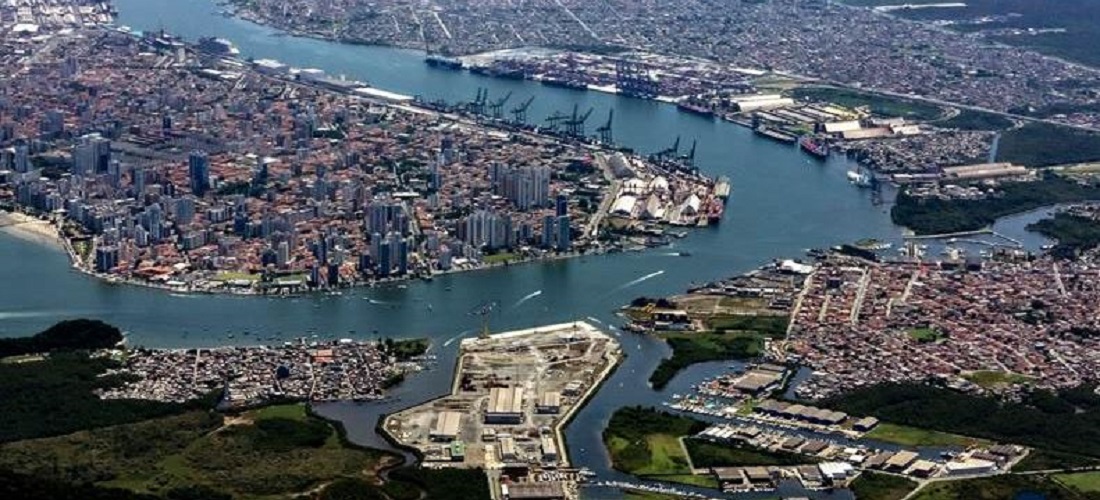
Trends in port recycling: Port of Santos-gathered waste turns into alcohol
Aug, 25, 2023 Posted by Gabriel MalheirosWeek 202335
At least twice a week, suction equipment travels the warehouses of Copersucar, one of the world’s largest sugar traders, at the port of Santos (SP), in a special cleaning operation.
This initiative has everything to do with a growing trend in the food production and export chain – sustainability. In the case of the program implemented at the port of Santos, the goal is to provide a more noble purpose for the waste.
Instead of going to landfills, exacerbating an important environmental issue, the waste is collected and transported by truck to Nova Odessa, in São Paulo’s countryside, where it is transformed into eco-alcohol. The technology used is the same as that used to produce ethanol.
Upon arriving at the factory in the interior of São Paulo, the waste undergoes a process of dilution in water, hydrolysis, fermentation, and distillation. Alcohol of 46% or 70% purity is obtained.
This year, production is expected to reach 13,000 liters, compared to ten thousand last year. Currently, most of it is donated to Copersucar employees, and the rest is allocated for sale. The potential could be four times higher.
For now, Copersucar’s terminal is the only one with such initiative. If all terminals handling sugar and grains at the port of Santos adopted this practice, the volume of alcohol produced would be around 40,000 liters, enough to provide nearly 62,000 1-liter bottles of hand sanitizer in a year or 5,200 bottles per month.
In any case, there should be no shortage of raw materials to boost the production of the product. Just last year, the port of Santos generated 102,600 tonnes of waste, 10.3% more than in 2021, following the growth of port activity itself.
In 2022, 162.4 million tonnes of cargo were handled, a 10.5% increase over 2021, according to the Port of Santos. The equation is simple. The more ships and cargo movement, the more waste generated.
This is a global issue. More than 80% of all goods traded worldwide are transported by sea, according to the World Bank. Vessels are responsible for about 20% of the waste dumped into the oceans. Ships generate up to 300,000 tons per year of waste that ends up in the sea, according to estimates from the European Commission.
It’s no small matter. Therefore, recycling initiatives in line with sustainability principles have been implemented in some of the world’s most important ports.
With the increase in maritime transport, more ports are likely to adopt waste recycling programs. Maritime trade is expected to grow by 2.1% in the next four years, according to UNCTAD (United Nations Conference on Trade and Development). At the same time, the sector is expected to continue investing in green initiatives to achieve compliance and ESG goals. Some ports are leading the way.
The port of Saint John, the largest on the Atlantic coast in Canada, launched an initiative to recycle maritime ropes. In partnership with NGOs, the material is transformed into rugs and baskets. Since 2021, more than three thousand kilograms of ropes have been reused – the material used to be discarded in landfills or the sea.
The Busan port complex in South Korea, in turn, has created a PET packaging recycling program. In less than two years, 14,000 PET bottles have been collected. The material is decomposed and transformed into bags and blankets, donated to NGOs or disfranchised communities. According to the Busan port authority, more than ten thousand bags have been produced.
The port of Busan, which had 22 million TEUs container throughput last year, has launched an ambitious expansion plan that foresees investments of around $32 billion by 2050. Most of the resources are expected to be used for the creation of new berths and automated container terminals, but there will also be room for investments in recycling and ESG goals.
One idea is to implement an innovative alternative energy generation system using technology based on the transformation of electromechanical energy generated by passing trucks in the port into electricity. The cost of these projects, however, often represents a hindrance.
In the Netherlands, the port of Amsterdam has considered adopting a technique to turn plastic into diesel. The manufacturing would take place in a specially created plant for this purpose. However, the project ran aground due to the large investment it would require, estimated in tens of millions of dollars, and did not take off.
In port-related recycling, the future seems to ask, at least in the short and medium term, for socio-environmental programs that can be implemented quickly and do not strain finances.
Source: Olhar Digital
To read the original news article, see: https://olhardigital.com.br/2023/08/24/colunistas/acucar-do-porto-de-santos-vira-ecoalcool-e-coreia-transforma-garrafas-pet-em-cobertor/
-
Ports and Terminals
Jul, 20, 2022
0
Imbituba cargo throughput grows 19.3% in the first half of the year
-
Economy
Jan, 16, 2023
0
Brazil’s trade balance surplus tops USD 1.7 bln in first half of January
-
Jun, 30, 2022
0
Latin America becomes the main destination for Chilean manufactured products in 2022
-
Other Cargo
Dec, 09, 2022
0
Brazilian cosmetics trade grows 8.6% from January to October


